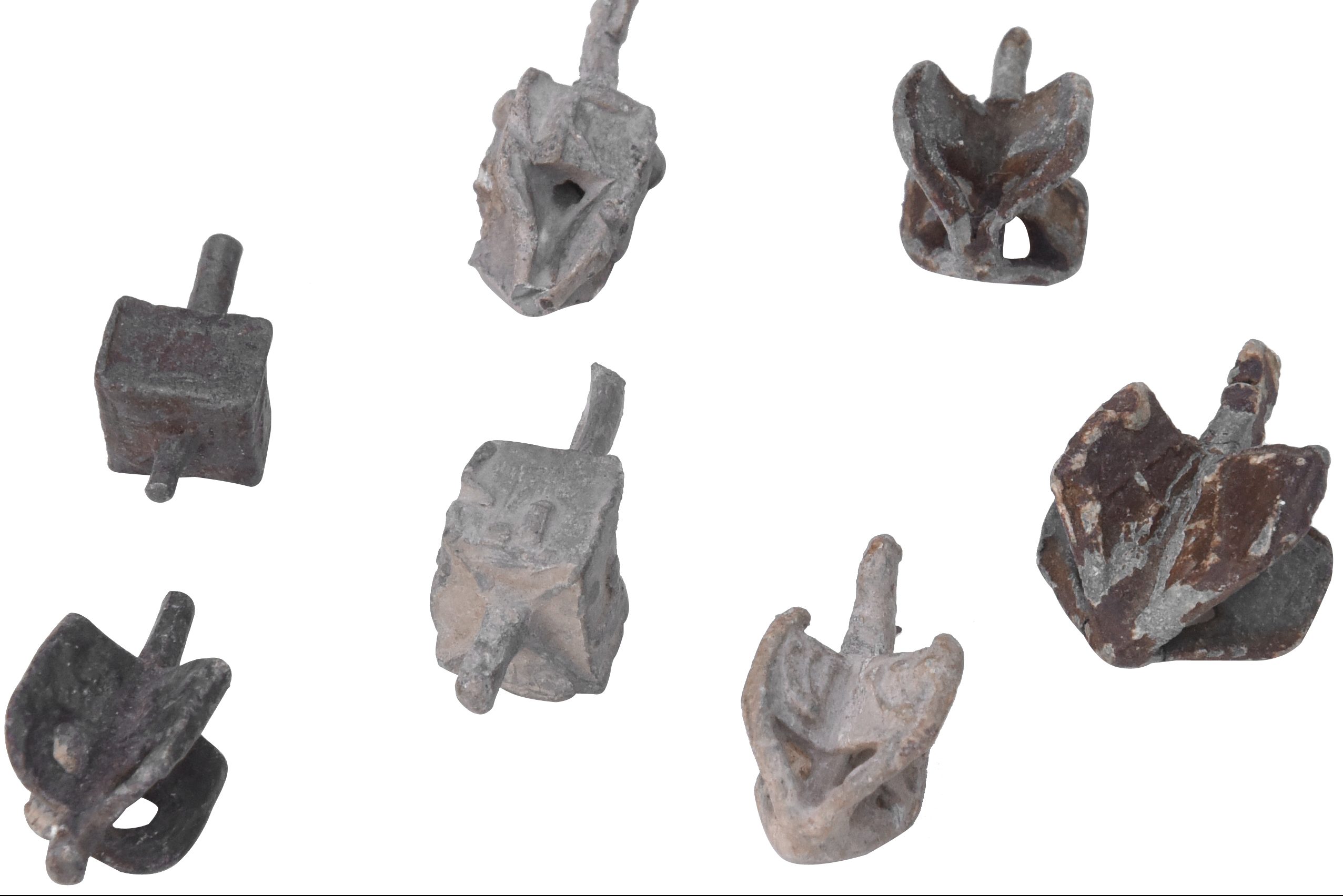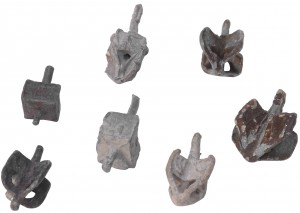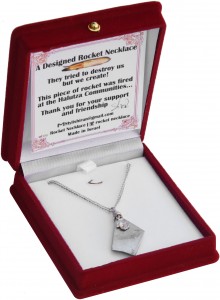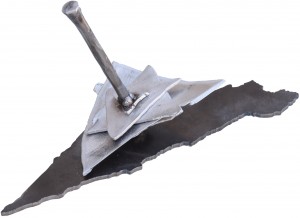My dreidels delight me.
They delight me because of their colors and shapes; they delight me because of all that they represent and they delight me because guests in our home smile when they see them. But sometimes a guest will look at my collection with a curious twinkle and ask: “But why so many? Why would you ever need another one?”
Like children, my dreidels are each a miracle. Each has a story to tell; each, so similar to the others and yet as unique as fingerprints. Still, while I delight in them, I often do not respond to the question this way. Instead, I tend to say, “More dreidels, more miracles.”
After all, the message of the dreidel is: A great miracle happened here!
The dreidel’s message is particular and universal. A great miracle happened in the time of the Maccabees. So too, do miracles occur each and every day, miracles both obvious and hidden. “More miracles, more dreidels,” I proclaim.
But sometimes my rabbinic voice and my more emotional voice speak as one. This happened this past year when I welcomed seven dreidels to my collection that added more than color, style, or delight. As a friend tearfully exclaimed when he saw them on my desk, “These are kodesh—holy!”
These dreidels speak of the great miracle of redemption, of the eternal bond between God and Am Yisrael. These dreidels call out from the depths of our shared misery in voices that are, at once, cries of despair and songs of rejoicing.
* * *
Seven. Seven little dreidels. So simple, so modest. They are… tiny. So very small. Yet, they have a strength and power to them that is hard to express. Gazing at them, it is possible to imagine kinderlach spinning them and, despite the shadows of the bunker or shelter or attic where they hide, their eyes are filled with wonder.
These dreidels are homemade, fashioned in Europe from pewter before the Second World War. I first came upon them as images on my computer screen. Offered for sale, I leaned closer to my computer monitor. These dreidels seemed to look back at me with tear-filled eyes. I could hear them crying out to me, “Help us! Bring us home!”
My own eyes filled with tears. I wanted them to tell me their story. “Where are you?”
Their answer was as clear as if they were in the room next to me. “Gan Eden. We are in Gan Eden with millions of kedoshim.”
I leaned closer still, until my face was almost pressed against the monitor. Their voices were the voices of the yiddelech who perished during the horrors of the Shoah, pleading with me, begging me to return them to the land of living Jews.
“Do not let us be forgotten!” They cried. “We know, we know that the Jewish people were not destroyed.” They whispered, “Am Yisroel Chai.” Then the hum of a melody—a song of Reb Shlomo’s? I could not be sure. “Do not let us be forgotten!”
What could I do? What could I do?
The site directed me to a certain Polish woman, a Katarzyna Sosnowska G. “She will know more…”
And so began a detective story of sorts. One in which I needed to shield my Jewish identity from Katarzyna, sensing that if she knew that I was a Jew and certainly if she knew I was a rabbi then all would be lost. I only allowed her to know that that I was a “collector.” But, I emphasized, I would not purchase these objects unless and until I learned everything I could about them. “I am a discerning collector,” I emphasized. “I am only interested in objects worthy of my attention.”
How my heart pounded as I engaged in this exchange with her. I already knew their worth to exceed anything she could imagine. Yet, I had to pursue this strategy lest these dreidels once again fall into the shadows of history.
“All of my dreidels are found in Poland. I bought it from the peoples who find them. Most of them are find 30 km from Warsaw in town Modlin, Zakroczym and Nowy Dwor Mazowiecki—it is Mazovia region.” These are her exact words as written, without correction, embellishment or comment!
But why, I asked were dreidels to be found in that region and in Poland?
“This dreidels was find on the places where before World War II live Jewish peoples. Such dreidels are in Polish museums are dated XIX centuries and the degree of corrosion can proved that it is truth.”
She continued that if I want to, “buy several I can make you discount.”
I closed my eyes and could see kinderlach laughing in delight as they spun their tiny little pewter dreidels all around Mazovia, Poland. Buy several? I want to buy them all! I want to redeem them all!
So their provenance was true. But I needed to know more. For the sake of the kinderlach I had to be sure.
“Are you in Poland now?”
On December 6, 2014, she replied, “Yes, am from POLAND :)”
“And the dreidels were found in their homes?”
“I wrote it to you, I have people whose find it and sell it to me. This region where I live was inhabited by the Jewish. They was the majority of the citizens of the city.”
I shuddered reading those words. “Interesting,” I typed. “So people find these objects in different places and then bring them to you to sell?” I read and reread my message several times before hitting “send.” I wanted to sound like an educated collector while keeping my true interest and awareness of the Holocaust hidden.
She seemed impatient with my “ignorance” of history. “No,” she insisted. “The Jewish live here before WWII. Dreidels are find in the old markets or its sediments. Currently, where Jewish live are meadows or fields of agricultural. Sometimes they find in places in town where are road digging by the workers.”
I studied her words with the intensity of a Kabbalist. “Dreidels from sediments.” “There used to be ‘Jewish live there.’” “Road digging.” She could not, in her wildest dreams, have imagined that those workers were laboring on behalf of the kinderlach who wanted me to bring their dreidels back to my home in Boro Park!
“It’s now 1:15 AM in Poland,” she wrote. “So I have to sleep because I am tired. I can write tomorrow if you want more details.”
That would be fine, I responded. Fine? It would be more than fine! There was so much more that I needed to know—but so many of my questions, I knew, would go unasked. For there could be no politically correct way to ask a Polish “dreidel handler” the questions I would demand of her!
The next day, I asked her to explain to me the way these objects were used.
I could sense the impatience in her answer. “It is a toy for kids. Nowadays dreidels are made from wood or plastic or some metal but in XIX century they were made from pewter.” Katarzyna then generously suggested, “You can read about dreidels here: en.wikipedia.org/wiki/Dreidel” She concluded, “I am not Jewish but I am interesting of this Nation.”
I could have simply made my offer and gotten the dreidels but I held off. I could not let go, not while I could still feel the piercing glance of the kinderlach from Gan Eden. Somehow I knew that they know that in my home there are countless living, joyous dreidels from all over the world. There are even singing dreidels! But not one from Poland. Not one from a land of so much of our suffering.
Most of my dreidels are from Israel. Imagine, to have these dreidels from the European Gehinnom alongside the dreidels from the homeland that God gave the Jewish people—a renewed, rejuvenated rebuilt homeland!
I pressed Katarzyna, “Is there any more information about the dreidels that were found in Poland?”
What else could she tell me? She had told me all she knew. She directed me to Wikipedia. I could almost see her shrug as she typed. “I don’t know more about this items. Peoples find it digging in the ground. Dreidels lay in ground over 70 years…”
Yes, and now they can be redeemed so that they can rejoin the land of the living!
“…before World War II in my town – Nowy Dwor Mazowiecki – over 60% citizens were Jewish, so we still find here Judaica like dreidels, badges, medallions.” And then, she summed up, “But in all regions in Poland there are towns like Nowy Dwor (Niehofer) Mazowiecki where lived many Jewish man. Lots of Jewish used be here.”
She could add nothing more. So, we negotiated a price for seven dreidels. Why seven? Perhaps because “7” represents shleimus—completeness, restfulness. I wanted the kinderlach to find solace and menucha nechona—proper rest.
“Ok. You have a real talent for bargaining. You are true collector and this dreidels are real piece of Polish Jewish people history. They survived the Holocaust in the ground.” (Could she have any inkling as to the power of this statement?)
Then, as we concluded our negotiation, this is the final thing the Polish woman wrote on December 7, 2014, “it is very sad that one man another man had prepared such a fate.”
* * *
And so these seven modest dreidels are now in my possession. Seven, small, pewter dreidels. They are not yet settled, but they are here. They are with me.
I have so many other dreidels, dreidels of masterful craftsmanship, dreidels of colors and brightness and joy. Dreidels of sterling silver, ceramic, wood, plastic and glass. Dreidels that play music, that flash lights. But none of them are as restless as these seven.
They are, indeed, kadosh. As such, I cannot bring myself to display them. That which is sacred must be covered. This is the true lesson of tzinus. So I keep these close to me and every day I hear them, every day I know they cry still for the millions and millions.
They longed for redemption, to be brought to my home and yet they also cherish privacy for none of us can ever understand what they have gone through.
“How can one man another man prepared such a fate?”
* * *
“They are kadosh. I need to kiss them.”
Yedidya Harush recognized their holiness as soon as he set eyes upon them. A young man of twenty-six, he had been born and spent his youngest years in Gush Katif’s settlement of Atzmona. Life was not easy there, but every resident believed they had a purpose in being there.
Then, on his seventeenth birthday, the Israeli government, in the belief that by ceding Gaza back to the Palestinians, peace would be brought closer, exiled all Israelis from the Gaza Strip. But peace has not been brought closer. The opposite has occurred. More terror. More disruption. More war.
Expelled from his home, Yedidya felt, “…empty and lonely,” like a stranger. Eventually after serving as a paratrooper in the IDF and about to start law school, Yedidya was contacted by some former Atzmona chevra reaching out to relocate to Halutza, in the northwest Negev on the border with Egypt and Gaza. Everything in Halutza speaks to growth, production, development, and innovation where yesteryear a leaf could not grow.
Today, Yedidya’s heart, mind, and soul is dedicated to bringing a message of optimism, renewal and faith to all he comes into contact with. Despite the obstacles he has encountered, he holds that there is a better tomorrow to come.
He is clear that nothing can stand in the path of life and growth in Israel, as long as, “…we understand that we are here for a reason.”
I was walking with Yedidya along King George Street in Jerusalem on Motzei Shabbat right before Yom Kippur. We were out for a bite to eat, Yedidya and I, my wife, Clary, Jerry and Shelly Abramson, friends from home, Yedidya’s wife, Shiran and their two children. Yedidya began to describe the various objects he had produced from the materials he’d collected from the Kassam rocket pieces that had rained down upon the Sderot region.
What creativity and ingenuity! To take pieces of destruction and havoc and transform them into expressions of hope and joy! He makes jewelry from these rocket fragments, each in a box with a card saying, “A designed rocket necklace—They tried to destroy us but we create.”
We continued on our way, enjoying the evening and the conversation. We were passing the Jerusalem Great Synagogue when Yedidya spoke about the mezuzah he was designing to be added to the Great Synagogue’s lobby mezuzah collection.
Suddenly, my thoughts were centered on another image. “Wait! Do you know about my dreidel collection…” Even as I spoke those words, I could picture a dreidel created from the fragments of a Kassam rocket. And if that dreidel were to also use materials from Israel’s Iron Dome Missile Defense system!
Neis Gadol Haya Po!
Terrorists might seek to destroy Israel but their rockets will be transformed into symbols of Israel’s redemption!
Excitedly, I explained the image in my mind. Yedidya was immediately overwhelmed. “Tell me again what it is you would like me to design and create.”
As I described my idea, I shared with him the story of my seven pewter dreidels. My voice was soft and insistent as I described the neshamos, souls, hovering all the way from Poland. “Imagine the message! Imagine the impact of these redeemed souls connecting with God’s ‘defense system’!”
* * *
And now, that Iron Dome dreidel is resting on my desk. Yedidya brought it to my home on 15 Cheshvan—October 28, 2015. He rested it on my desk carefully, lovingly. As he did, he described its composition in detail. Its stick was crafted from a piece of Kassam rocket fired at Israel from Gaza. Its body was formed from pieces of the Iron Dome that intercepted the Kassam rockets intended to destroy the Jewish homeland. The base—also formed from a piece of Kassam rocket—had been shaped into a map of Israel with the stick/handle pointed directly at Sderot, the target of so many of those rockets.
Neis Gadol Haya Po!
When I showed him my seven dreidels, he pronounced them kadosh. Then he bent down to kiss them, just as he would have kissed the Kotel.
When he left a short while later, I hugged and kissed Yedidya. “Thank you,” I said to him, “thank you for allowing me to welcome a modern day miracle into our home.”
When I was once again alone, seated at my desk, I could not help but stare at my new, Iron Dome dreidel. I closed my eyes and, in my silence, I thought I could hear my seven pewter kinderlach whispering, “Now we are at rest. Thank you for bringing us here; now we know we are redeemed and that the Ribono shel Olam will never allow “one man another man prepare such a fate…”
It was then that the Iron Dome dreidel chimed in, “…and if he does, Hashem will provide us with His Defense System!”
* * *
I cannot help but reflect on my dreidels, all of them, and the powerful message of miracle and redemption that they teach. Who could have ever imagined that my seven pewter dreidels would ever find their way to my home? And in that miraculous journey, I sensed another message of the dreidel. For, just as the dreidel spins and lands with only one side up, history and experience also show us only some of reality. The four sides of the dreidel teach that we are never truly seeing the whole story and that there is always another side that remains hidden to us.
When we begin to grasp the deep truth of the dreidel, we come to understand that with so much beyond our understanding, we have to have faith in hidden miracles and in God. We simply cannot comprehend the meaning of the countless events that mark our long history.
Bridging the near-insurmountable distance between hayamim hahem to ba’zeman hazeh is the mystical gift of our survival—physical, spiritual and religious. That same bridge—that carries us from the hei of the dreidel to the neis!
For further information to order a Kassam necklace or your own Kassam/Iron Dome dreidel, contact Yedidya Harush at Yedid101@gmail.com




